- What is skin scraping?
- What is cytology?
- What is skin biopsy?
- What is video otoscopy?
- What is skin testing?
What is skin scraping?
A skin scraping is a basic dermatological procedure. It is performed using a blade, a glass slide, and mineral oil. The skin is scraped either superficially or deep to search for mites (parasites) that live on the skin surface or hair follicle, respectively. This procedure is not intended to cut the skin, but rather scrape the skin. The area scraped will look like an abrasion (when you “skin” your knee) once completed. The sample is gathered on the glass slide with mineral oil and examined under a microscope.
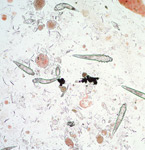
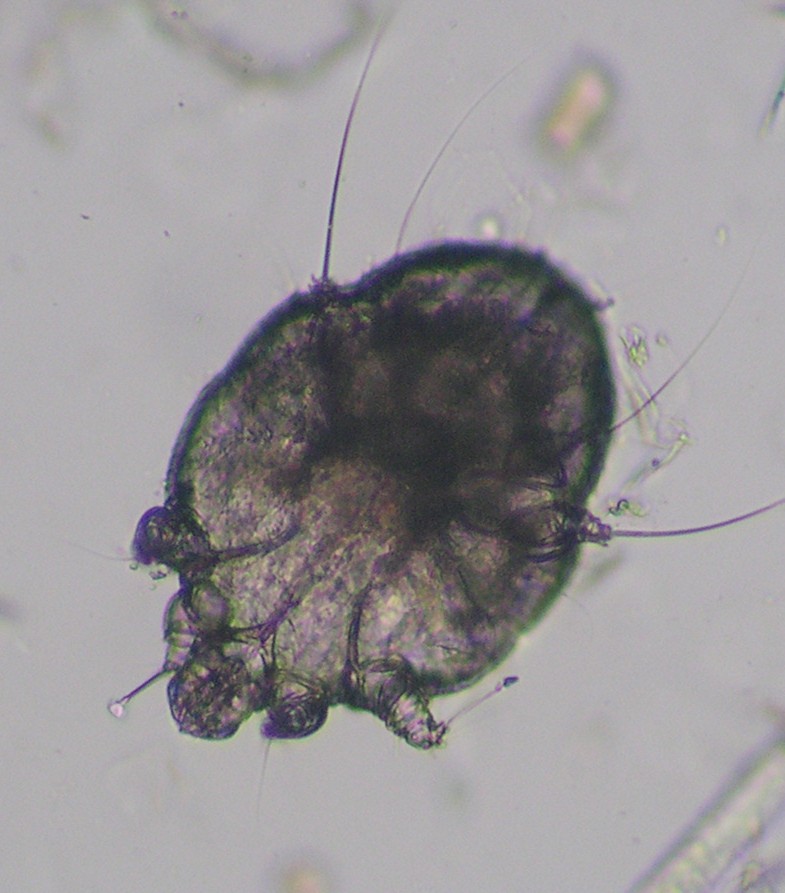
LEFT: Demodex Mites.
RIGHT: Scabies Mite.
What is cytology?
Skin cytology is a basic dermatological procedure. It can be performed in several ways but the intent is the same, to collect a sample in search of cells and micro-organisms (bacteria and yeast) which may be contributing to the skin or ear condition. One technique is to rub a glass slide on a lesion (sore). Another way is to repeatedly press clear acetate tape on a lesion and then fixing the tape to a slide. Lastly, a cotton swab (especially for ears and body folds) or blade may be used to smear collected contents on a glass slide. Regardless of the technique, each slide is stained and examined under the microscope.
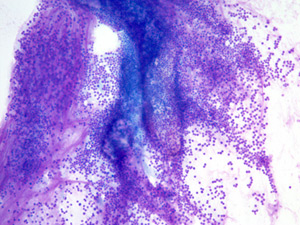
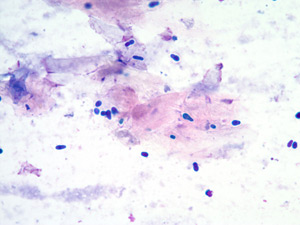
LEFT: Bacteria.
RIGHT: Yeast.
What is skin biopsy?
A skin biopsy is a procedure used by dermatologists to collect a small sample of full-thickness skin. This is usually done after other diagnostics such as skin scraping and cytology have already been performed. In many cases, several small samples (about the size of pencil eraser) are obtained using a biopsy punch. Other times, a larger skin sample may be necessary. The skin is then closed with a couple of sutures (stitches) which will need to be removed several days later. Depending on the body location being biopsied, a local anesthetic (skin numbing agent such as lidocaine), brief sedation, and/or general anesthesia is required to minimize the patient’s pain and anxiety involved in sample collection. In many instances, minimal clipping of fur is necessary to assure a good biopsy sample. Once the biopsy is collected, the dermatologist sends the tissue to a dermatopathologist (pathologist who specializes in skin disease) for processing, microscopic evaluation, and interpretation. This process generally takes about one week. Skin biopsy is particularly useful for evaluating potential auto-immune skin diseases, hair follicle disorders, deep infections, and cancer. Often, the skin biopsy will allow the dermatologist to exclude several serious skin diseases if a specific cause cannot be identified.
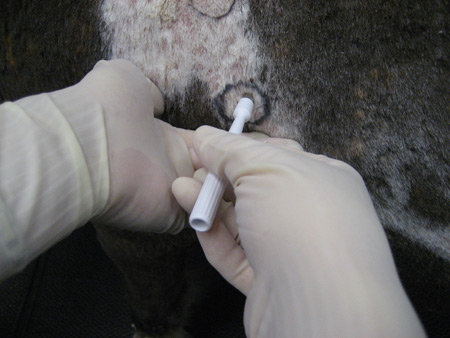
Punch biopsy taken from a miniature horse.
What is video otoscopy?
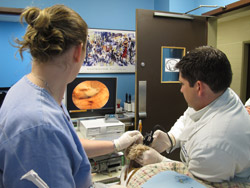
Video otoscopy allows the dermatologist to magnify and examine the external canal and tympanic membrane (ear drum) in a patient’s ear. The video otoscope is a small, cone-shaped camera that is placed in a patient’s ear canal allowing the dermatologist to visualize and assess the presence and extent of disease. Depending on the nature of the patient, sedation may be necessary during examination. Video otoscopy is frequently used to help determine what may be contributing to patient’s ear disease. It can allow the dermatologist to see whether there is swelling or even if a growth is present in the ear. Likewise, the magnified field of view helps the dermatologist collect samples for culture and biopsy when necessary. Video otoscopy is also utilized during irrigation (flushing) of the external ear canal and middle ear. This allows the dermatologist to assure correct placement of cleaning tools and adequate removal of debris from the ear canal. An added feature of the video otoscope is that it has the ability to take pictures of your pet’s ear canal to illustrate what the dermatologist is seeing, and document the severity of disease so treatment response can be assessed in the future.
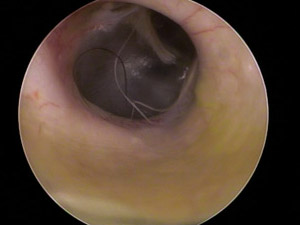
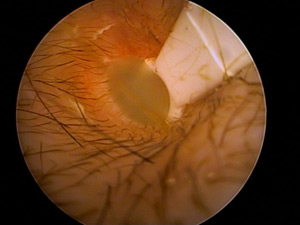
LEFT: Normal ear canal.
RIGHT: Ear cleaning procedure.
What is skin testing?
Intradermal testing (IDT) or allergy skin testing is a tool that aids the dermatologist in the selection of environmental allergens (pollen, mold, mites, insects, dander) for subsequent immunotherapy (allergen-specific allergy shots). This test followed by tailor-made allergy shots is best performed after other possibilities for the itchy skin disease have been excluded. Veterinary IDT is similar to human allergy skin testing; however, our patients need sedation and clipping. The side of the chest will be shaved in the shape of a rectangle and small black Sharpie pen dots will be put in a linear array on the shaved skin allowing us to know where to make each injection. A panel of allergens is then injected in the skin. The size of any developing wheals is recorded. The entire procedure last approximately 30 minutes. Importantly, this test is used for environmental allergies (atopic dermatitis), not food-related allergies.

Intradermal Testing



